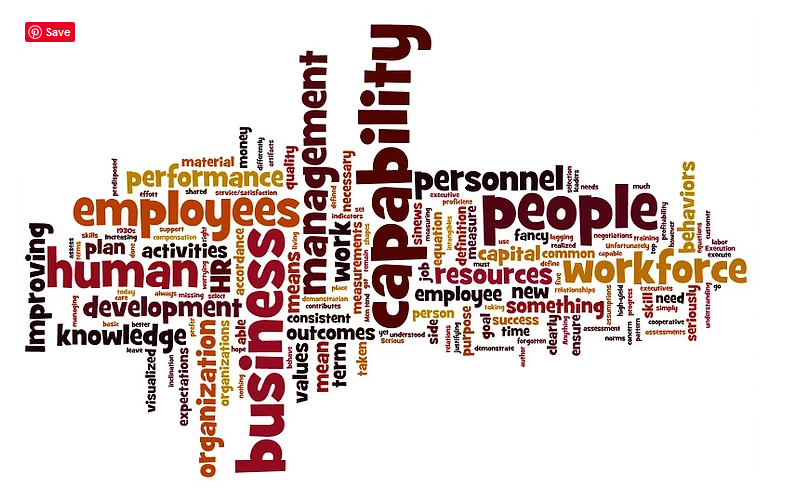Here we go again. We’ve moved from manpower to personnel to human resources and human capital, from knowledge management and talent management to the latest catchphrase: workforce capability.
I realized how little has changed in the field when I recently came across a 1930 “Modern Business” text on personnel management. “Men, material, and money are the sinews of business,” the author wrote, “but the most important of these is men.” The formal study of people in organizations is less than 100 years old, and regardless of the sexist nature of the statement the sentiment still stands if you include women. But for the last 30 years, those who are in the people side of the business have been looking for a better term and a few equations or formulas to prove their worth to other senior leaders.
A big step up in the credibility of human resources came when we began measuring the human capital of an organization. Unfortunately, all such measurements were lagging indicators because you can’t measure the quality of the person until after he or she has been on the job for some time. As a result, human capital measurements became assessments of activities and outcomes rather than of the intangibles that make people behave in ways that lead to those outcomes.
Now, in workforce capability, we’ve got a new term and a new kind of assessment that some hope will allow HR to be taken even more seriously. And yet my 1930s book understood something that we’ve forgotten today. The purpose of personnel management is, “mutual understanding and cooperative effort toward a clearly visualized common goal — success in business, and profit, progress, satisfaction, and happiness for all…” In justifying the means, workforce capability doesn’t concern itself with the end.
Here’s what I mean. One definition of workforce capability is: “The pattern of basic assumptions, values, norms, and artifacts shared by people in an organization that shapes how work is done and relationships are managed.” What’s missing?
The purpose of the work those employees are engaged in. As the 1930 author articulated, we need our personnel to achieve a clearly visualized common goal that is in accordance with the strategic business plan.
Capability on its own means being predisposed to or inclined to doing something. It does not mean that the person will act on that inclination when required. Execution of the task is necessary for capability to be realized. But organizations focused on capability tend to select for and develop knowledge and skill in employees without taking as much care about ensuring that those employees have the attitudes and behaviors necessary to use that capability effectively at the right time.
In other words, workforce capability is no more than having the skills and knowledge to do the job.
According to HR’s own definition, a set of employees who are capable simply means having people in place who are technically proficient. It doesn’t matter what those people do. Why does HR always miss the other side of the equation? If I were to formulate that equation differently, it might go something like this:
Where “performance” is those activities the employee engages in that are in accordance with the business plan and the values of the organization. (A word of caution for those who prefer a category in performance reviews labeled, “exceeds expectations.” You cannot exceed expectations if the company has defined the behaviors appropriately for getting the work accomplished. Anything less than consistent demonstration of the behaviors would mean the employee has a need for further development.)
So where does that leave us? Despite the fancy term, workforce capability is nothing more than managing and developing personnel — directing skill and knowledge. The activities that HR and management engage in to ensure employees demonstrate performance remain the same. We call them: performance management, organizational development, employee relations, labor negotiations, executive compensation, training and development, leadership development, recruitment, selection, and retention.

If human resources wants to be taken seriously, however, it needs to stop worrying about fancy new terms and start focusing on what employees must do to execute the business plan consistent while living the values that define the corporate culture. Serious high-yield goals for HR are to ensure the creation of support for the business that should include:
1. Improving customer service/satisfaction
2. Improving productivity
3. Increasing profitability
4. Improving quality
5. Improving safety
If we can assess and measure how the work employees are doing directly contributes to those five outcomes, human resources will be able to actually influence the success of the organization. Only then will we be able to say to top executives that “People, material, and money are the sinews of business, but the most important of these is people.”
 DS Cohen & Associates
DS Cohen & Associates
